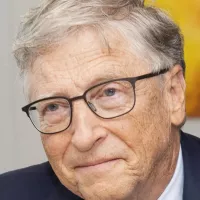Manatees, also known as sea cows, are large, herbivorous marine mammals. Three species exist: Amazonian, West Indian, and West African manatees. They are fully aquatic, reaching up to 4 meters in length and 590 kg in weight, characterized by their paddle-like tails. As members of the order Sirenia, they are an integral part of marine ecosystems.
July 21, 1948: Snooty's Birth
On July 21, 1948, Snooty, the oldest manatee in captivity, was born at the Miami Aquarium and Tackle Company.
1967: West Indian Manatees Classified as Endangered
In 1967, West Indian manatees were originally classified as endangered.
1973: Brazil Outlaws Hunting
In 1973, Brazil outlawed hunting in an effort to preserve the Amazonian manatee species.
1992: Increased Boat Mortality Rates
Since 1992, observed boat mortality rates increased, leading to dire predictions for manatee recovery in the Atlantic and Southwest regions.
1994: Lack of Enforced Laws
As of 1994, despite protections in place for Amazonian manatees, there were no enforced laws, and manatees were still being captured throughout their range.
1995: Manatee Sighting
In 1995, a manatee was sighted as far north as New York City, indicating the species' ability to travel long distances.
1996: Red Tide Manatee Deaths
In 1996, a red tide was responsible for 151 manatee deaths in Florida, killing approximately 15% of the known population along South Florida's western coast.
1996: Manatee Winter Survey in Florida
In 1996, a winter survey in Florida found 2,639 manatees. This count is part of a series of variable population estimates for the species.
1997: Population Viability Studies
In 1997, population viability studies indicated that decreasing adult survival rates made eventual extinction probable for Florida manatees without increased protection.
1997: Manatee Surveys in Florida
In 1997, surveys in Florida found 2,229 manatees in January and 1,706 in February, highlighting the variability in population counts.
1999: Manatee Bay Facility Opens
Since 1999, the Columbus Zoo's Manatee Bay facility has helped rehabilitate 20 manatees.
2001: Columbus Zoo Founding Member
In 2001, the Columbus Zoo became a founding member of the Manatee Rehabilitation Partnership.
2002: High Number of Manatee Deaths Due to Watercraft
In 2002, 95 Florida manatees were killed by commercial and recreational vessels.
2003: Population Model Release
In 2003, the United States Geological Survey released a population model predicting a grave situation for manatees in the Southwest and Atlantic regions.
2006: Manatee Sightings in Northern Areas
In 2006, a manatee was seen in New York City and Rhode Island's Narragansett Bay, and another was spotted in Memphis, Tennessee, though it later died.
2009: Record Number of Manatee Deaths Due to Watercraft
In 2009, 97 Florida manatees were killed by commercial and recreational vessels, surpassing the previous record of 95 in 2002.
January 2010: Record Manatee Count in Florida
In January 2010, a statewide synoptic survey found 5,067 manatees living in Florida, marking the highest number recorded up to that time.
January 2016: West Indian Manatee Population Estimate
As of January 2016, the USFWS estimated the range-wide West Indian manatee population to be at least 13,000.
January 2016: Proposed Downgrading of Manatee Status
In January 2016, the U.S. Fish and Wildlife Service proposed downgrading the manatee's status from endangered to threatened after more than 40 years.
January 2016: High Manatee Death Toll
In January 2016, there were 43 manatee deaths in Florida alone, contributing to the approximately 99 manatee deaths each year related to human activities.
February 2016: Manatee Count in Florida Springs
As of February 2016, 6,250 manatees were reported swimming in Florida's springs.
March 2017: Manatee Status Downgraded to Threatened
In March 2017, The U.S. Fish and Wildlife Service downgraded the West Indian manatee's status from "endangered" to "threatened", citing improvements to habitat conditions, population growth and reductions of threats, a decision met with controversy.
July 23, 2017: Snooty's Death
Snooty died suddenly on July 23, 2017, two days after his 69th birthday, after swimming into a plumbing access area.
January 2018: Florida Manatee Population Estimate
As of January 2018, at least 6,100 manatees were estimated to be in Florida.
February 2020: Unusual Manatee Death in New Jersey
In February 2020, a manatee was found dead on a New Jersey beach, which was considered unusual due to the cold water temperatures at the time.
2021: Seagrass Die-Off and Manatee Starvation
In 2021, a massive die-off of seagrass along the Atlantic coast of Florida led to widespread manatee starvation and deaths.
2021: Sharp Increase in Manatee Deaths
In 2021, manatee deaths in Florida nearly doubled from 637 in 2020 to 1100.
November 2022: Red Tide Manatee Deaths
Beginning in November 2022, a red tide killed 123 manatees by June 2023.
2022: Discovery of New Manatee Habitat
In 2022, a new manatee habitat was discovered by Klaus Thymann within the cenotes of Sian Ka'an Biosphere Reserve on the Yucatán Peninsula.
2022: Manatee Feeding Program Initiated
In early 2022, the U.S. Fish and Wildlife Service began a feeding program, distributing 3,000 pounds of lettuce per day to malnourished manatees in Florida.
June 2023: Red Tide Manatee Deaths
Ending in June 2023, a red tide killed 123 manatees since November 2022.
2024: New Scientist Feature on Manatee Habitat Discovery
In 2024, the New Scientist featured a 10-minute short film about the manatee habitat discovery in the cenotes of Sian Ka'an Biosphere Reserve.
Mentioned in this timeline

Miami is a major coastal city located in Florida United...
Florida a state in the Southeastern United States is largely...
Brazil is the largest country in South America ranking fifth...

Travel involves the movement of people between geographical locations using...
Trending

16 days ago Amon-Ra St. Brown's Status Uncertain for Lions vs. Cowboys Game Due to Injury.

18 days ago Marco Rubio's Venezuela Stance: War Sales Pitch and Social Media Influence Examined
5 months ago Trump's Tariff Easing on Serbia: Aims for Trade Deal with President Vucic
1 month ago Yankees Re-Sign Ryan Yarbrough to One-Year Deal: Bolstering Left-Handed Pitching
5 months ago Senator concerned JetBlue and United partnership may negatively affect market competition.

9 months ago Ian McKellen Returns to Marvel Universe in 'Avengers: Doomsday' as Magneto.
Popular

Candace Owens is an American conservative political commentator and author...

Tucker Carlson is an American conservative political commentator known for...

XXXTentacion born Jahseh Dwayne Ricardo Onfroy was a controversial yet...

Kashyap Pramod Patel is an American lawyer who became the...

Ilhan Omar is an American politician currently serving as the...

Bill Gates an American businessman and philanthropist revolutionized personal computing...
